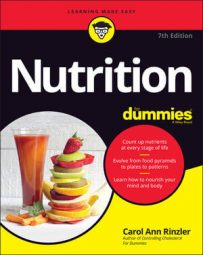U.S. Department of Agriculture (USDA) Nutrient Database
The USDA Nutrient Database is the ultimate official food info chart, with nutrient data for more than 5,000 foods in several serving sizes and different preparations. Each entry is a snapshot of a specific food serving (for example, a raw apple with skin) that lists the amount of- Water (by weight)
- Energy (calories)
- Protein
- Total fat
- Carbohydrates
- Dietary fiber
- Sugars
- Minerals: Calcium, iron, magnesium, phosphorus, potassium, sodium, zinc, copper, and selenium
- Vitamins: Vitamin C, thiamin (vitamin B1), riboflavin (vitamin B2), niacin, vitamin B6, folate, choline, vitamin B12 (naturally occurring or added), vitamin A (total), vitamin A as retinol, alpha carotene, beta carotene, cryptoxanthin, lyciopene, lutein, luteine + zeaxanthin, vitamin E (naturally occurring), vitamin E (added), vitamin D, and vitamin K
- Lipids (fatty acids): Total saturated, monounsaturated, and polyunsaturated fatty acids, plus cholesterol
- Amino acids
- Other: Alcohol, caffeine, theobromine (the stimulant found primarily in tea)
Looking for a specific nutrient rather than a food? Go back to square one. Click the box at the top of the first page marked Nutrients List. Then fill in the boxes (nutrient, food category, and serving size).
USDA Food and Nutrition Information Center (FNIC)
The FNIC is the USDA Nutrient Database's sister, part of the USDA National Agricultural Library.Start by sliding your cursor over to the box on the left side of the home page to pick a subject from the Browse by Subject list.
Your other option is to click on Topics A–Z at the top of the page. Alas, there is no entry for Z and none for Q, X, or Y either, but every other letter of the alphabet has at least one fascinating entry.
U.S. Food and Drug Administration (FDA)
Entering the U.S. FDA website is like opening the door to the world's biggest nutritional-information toy store. So much stuff is on the (virtual) shelves that you hardly know which item to grab first. Luckily, in this store, all the toys are free, and plenty of links to other helpful information means you can linger here happily for days, weeks, years . . . maybe forever.The FDA's charter includes drugs as well as food, so on the left of the home page, you can click links to information on medicines for people and pets, poisons and side effects, medical devices (think: pacemakers), and products that give off radiation.
Academy of Nutrition and Dietetics (AND)
The website for the Academy of Nutrition and Dietetics, formerly the American Dietetics Association, features nutrition recommendation, research, and policy from the world's largest membership group of nutritional professionals, primarily registered dieticians.The AND home page does serve up links to categories, such as Professional Development, that are clearly meant to appeal to association members. But the rest is tilted toward consumers with daily nutrition tips and nutrition position papers.
The American Heart Association (AHA)
The indisputable link between diet and the risk of heart disease, not to mention the AHA site's user-friendly approach, makes this site a must-stop on your nutritional tour of the web.Starting at the home page, click Getting Healthy at the top. Then slide your cursor to Nutrition Center. Up pops a list of subjects, such as a guide to healthy restaurant choices, recipes, an explanation of the healthy heart symbol that makes it easy to shop smart at the supermarket, and so on. All in all, a thoroughly valuable series of clicks.
American Cancer Society (ACS)
Once upon a time, the American Cancer Society was barely a blip on the screen of nutrition sources. Today, with a growing number of well-designed studies to demonstrate that some foods and diet regimens may reduce your risk of certain types of cancer while others may put you in harm's way, the ACS website offers solid reporting on this area of nutritional research.Click the Stay Healthy link at the top of the ACS home page. Then scroll down to Stay Healthy Topics, then click on Eat Healthy and Stay Active for info about cancer and diet (plus exercise, of course).
Food Allergy Research & Education (FARE)
FARE, formerly the Food Allergy and Anaphylaxis Network, is a nonprofit membership organization whose participants include families, doctors, dietitians, nurses, support groups, and food manufacturers in the United States, Canada, and Europe. The group provides education about food allergies in addition to support and coping strategies for people who are allergic to specific foods.From the home page, you can link to updates, daily tips, newsletter excerpts, and all the usual service-oriented goodies. The site's best feature is a no-charge email alert system. Click the box labeled Stay Informed, fill out the form, submit, and you're now connected to an early warning system with allergy-linked news and information about recalls of troublesome products, such as bags of cashews that may mistakenly contain peanuts.
Mayo Clinic
When you go to the Mayo Clinic web page, type nutrition into the Search box. That search pulled up 2,250 entries, ranging from basics to breastfeeding.Of course, nutrition information isn't all this award-winning site has to offer. In fact, the virtue of a site created by one of America's premier medical centers is that it's packed with, well, medical links, many nutrition-related.

